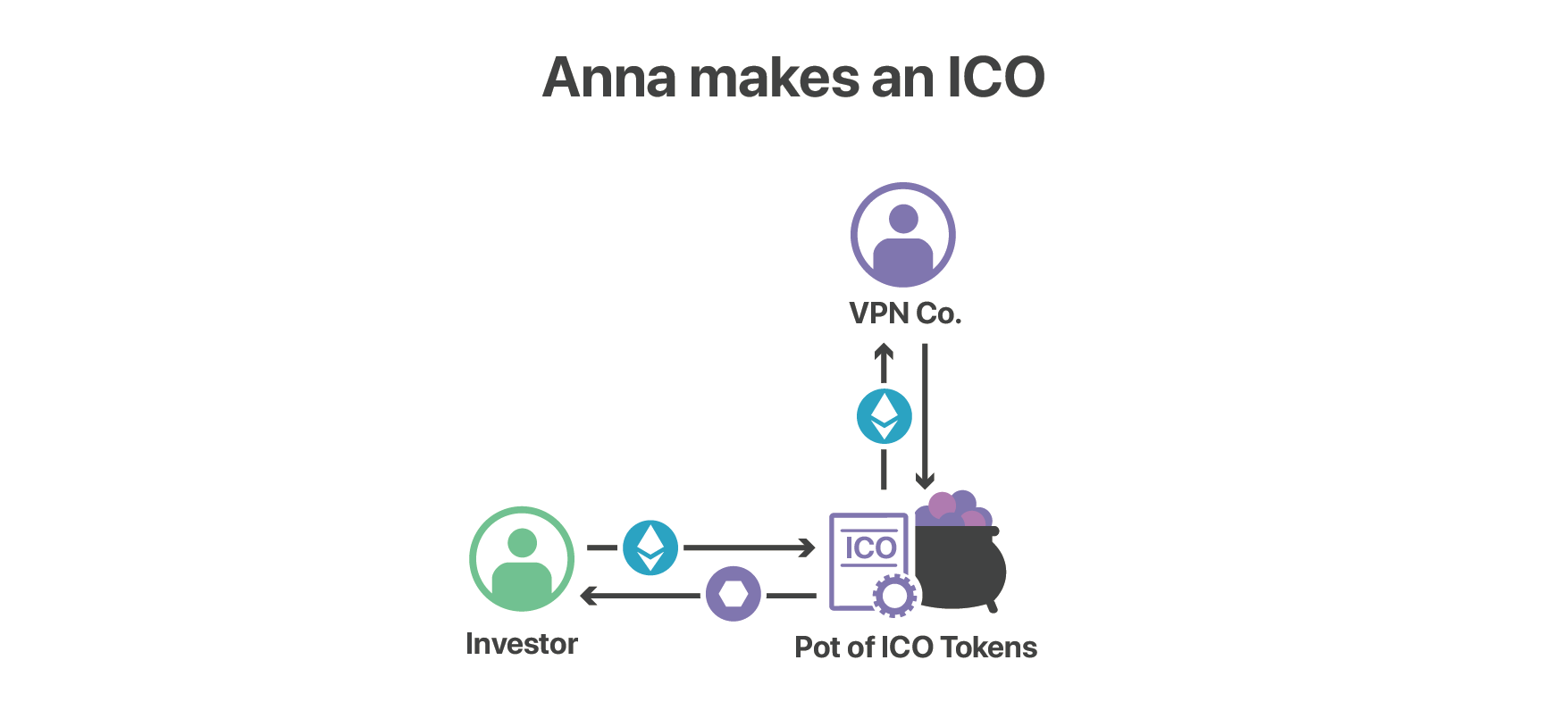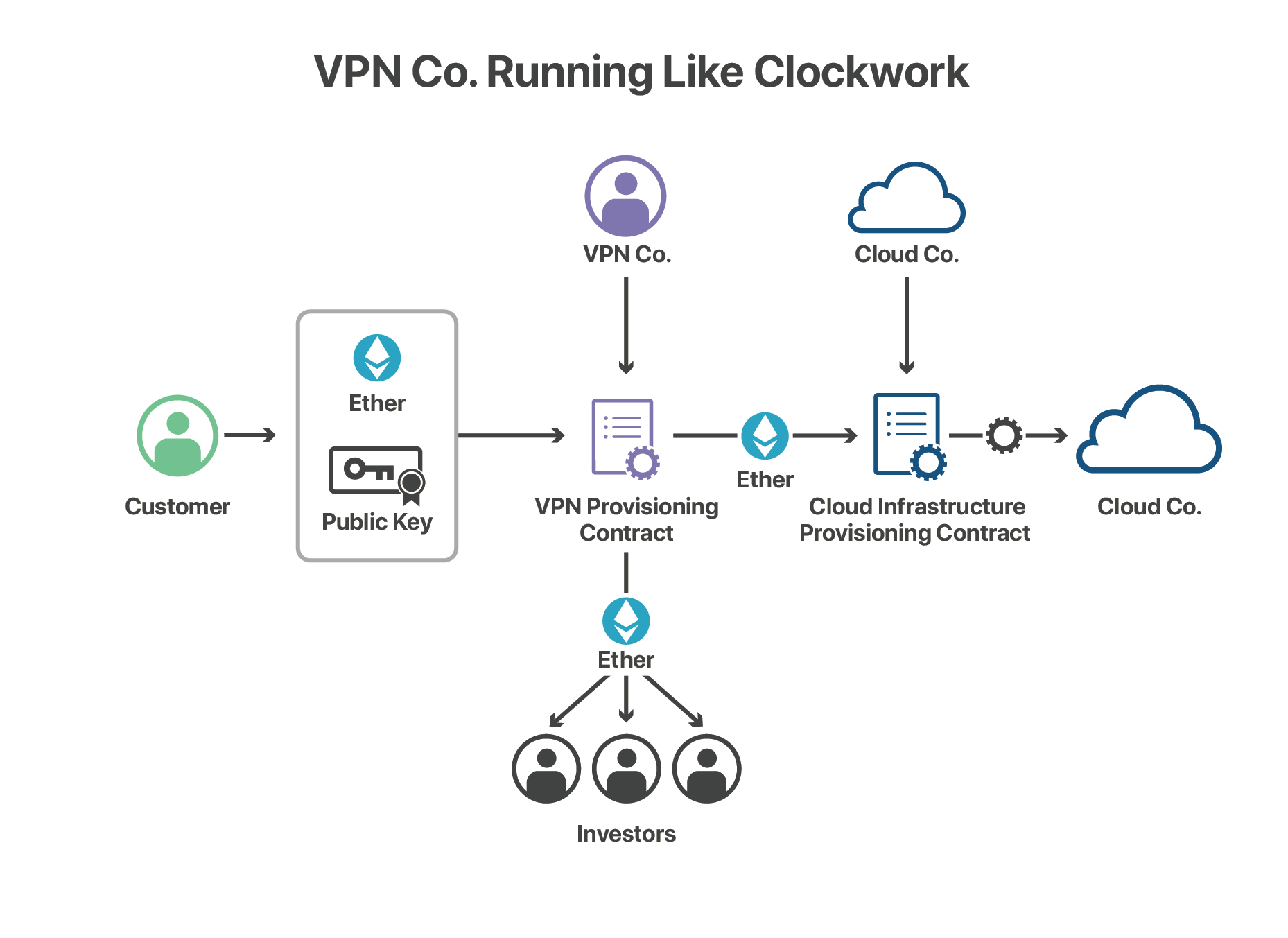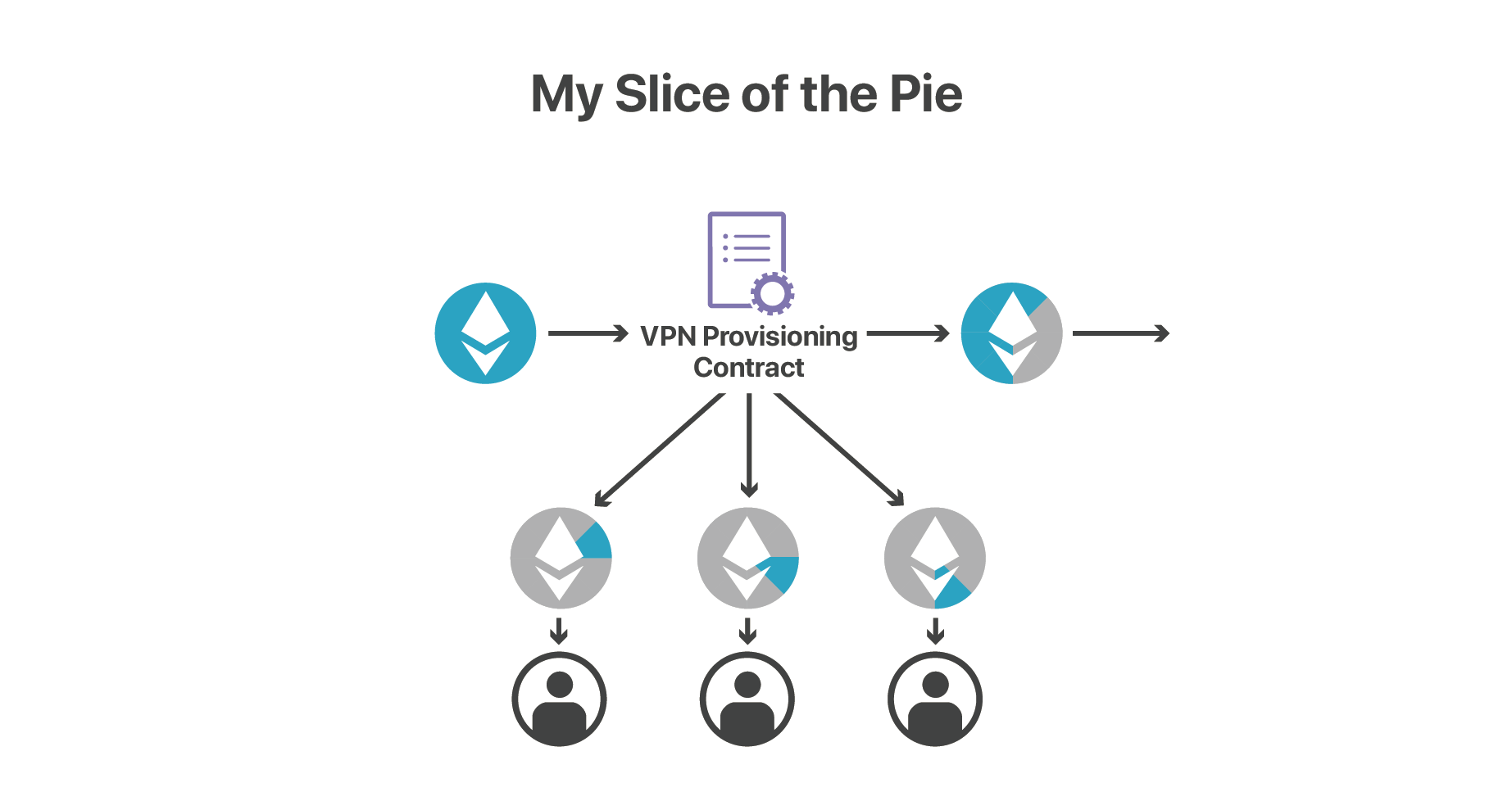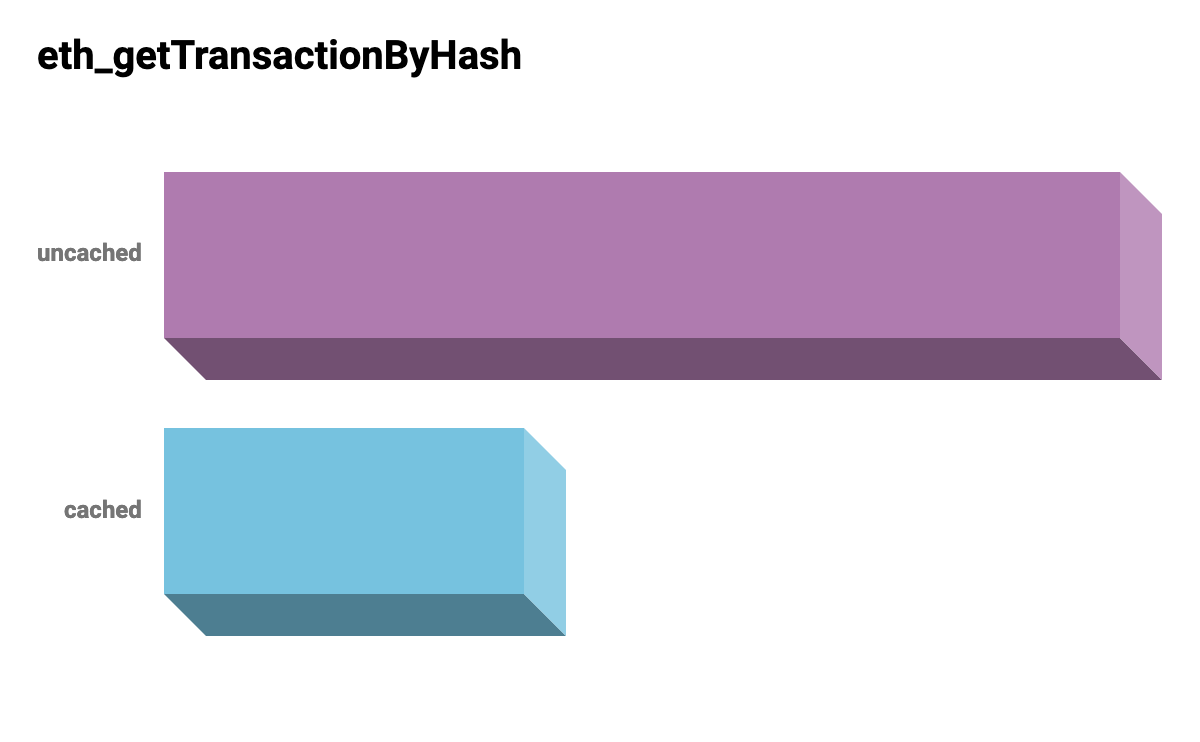
Today, as part of Crypto Week 2019, we are excited to announce Cloudflare's Ethereum Gateway, where you can interact with the Ethereum network without installing any additional software on your computer.
This is another tool in Cloudflare’s Distributed Web Gateway tool set. Currently, Cloudflare lets you host content on the InterPlanetary File System (IPFS) and access it through your own custom domain. Similarly, the new Ethereum Gateway allows access to the Ethereum network, which you can provision through your custom hostname.
This setup makes it possible to add interactive elements to sites powered by Ethereum smart contracts, a decentralized computing platform. And, in conjunction with the IPFS gateway, this allows hosting websites and resources in a decentralized manner, and has the extra bonus of the added speed, security, and reliability provided by the Cloudflare edge network. You can access our Ethereum gateway directly at https://cloudflare-eth.com.
This brief primer on how Ethereum and smart contracts work has examples of the many possibilities of using the Cloudflare Distributed Web Gateway.
Primer on Ethereum
You may have heard of Ethereum as a cryptocurrency. What you may not know is that Ethereum is so much more. Ethereum is a distributed virtual computing network that stores and enforces smart contracts.
So, what is a smart contract?
Good question. Ethereum smart contracts are simply a piece of code stored on the Ethereum blockchain. When the contract is triggered, it runs on the Ethereum Virtual Machine (EVM). The EVM is a distributed virtual machine that runs smart contract code and produces cryptographically verified changes to the state of the Ethereum blockchain as its result.
To illustrate the power of smart contracts, let's consider a little example.
Anna wants to start a VPN provider, but she lacks the capital. To raise funds for her venture she decides to hold an Initial Coin Offering (ICO). Rather than design an ICO contract from scratch Anna bases her contract off of ERC-20. ERC-20 is a template for issuing fungible tokens, perfect for ICOs. Anna sends her ERC-20 compliant contract to the Ethereum network, and starts to sell stock in her new company, VPN Co.

Once she's sorted out funds, Anna sits down and starts to write a smart contract. Anna’s contract asks customers to send her their public key, along with some Ether (the coin product of Ethereum). She then authorizes the public key to access her VPN service. All without having to hold any secret information. Huzzah!
Next, rather than set up the infrastructure to run a VPN herself, Anna decides to use the blockchain again, but this time as a customer. Cloud Co. sells managed cloud infrastructure using their own smart contract. Anna programs her contract to send the appropriate amount of Ether to Cloud Co.'s contract. Cloud Co. then provisions the servers she needs to host her VPN. By automatically purchasing more infrastructure every time she has a new customer, her VPN company can scale totally autonomously.

Finally, Anna pays dividends to her investors out of the profits, keeping a little for herself.

And there you have it.
A decentralised, autonomous, smart VPN provider.
A smart contract stored on the blockchain has an associated account for storing funds, and the contract is triggered when someone sends Ether to that account. So for our VPN example, the provisioning contract triggers when someone transfers money into the account associated with Anna’s contract.
What distinguishes smart contracts from ordinary code?
The "smart" part of a smart contract is they run autonomously. The "contract" part is the guarantee that the code runs as written.
Because this contract is enforced cryptographically, maintained in the tamper-resistant medium of the blockchain and verified by the consensus of the network, these contracts are more reliable than regular contracts which can provoke dispute.
Ethereum Smart Contracts vs. Traditional Contracts
A regular contract is enforced by the court system, litigated by lawyers. The outcome is uncertain; different courts rule differently and hiring more or better lawyers can swing the odds in your favor.
Smart contract outcomes are predetermined and are nearly incorruptible. However, here be dragons: though the outcome can be predetermined and incorruptible, a poorly written contract might not have the intended behavior, and because contracts are immutable, this is difficult to fix.
How are smart contracts written?
You can write smart contracts in a number of languages, some of which are Turing complete, e.g. Solidity. A Turing complete language lets you write code that can evaluate any computable function. This puts Solidity in the same class of languages as Python and Java. The compiled bytecode is then run on the EVM.
The EVM differs from a standard VM in a number of ways:
The EVM is distributed
Each piece of code is run by numerous nodes. Nodes verify the computation before accepting a block, and therefore ensure that miners who want their blocks accepted must always run the EVM honestly. A block is only considered accepted when more than half of the network accepts it. This is the consensus part of Ethereum.
The EVM is entirely deterministic
This means that the same inputs to a function always produce the same outputs. Because regular VMs have access to file storage and the network, the results of a function call can be non-deterministic. Every EVM has the same start state, thus a given set of inputs always gives the same outputs. This makes the EVM more reliable than a standard VM.
There are two big gotchas that come with this determinism:
- EVM bytecode is Turing complete and therefore discerning the outputs without running the computation is not always possible.
- Ethereum smart contracts can store state on the blockchain. This means that the output of the function can vary as the blockchain changes. Although, technically this is deterministic in that the blockchain is an input to the function, it may still be impossible to derive the output in advance.
This however means that they suffer from the same problems as any piece of software – bugs. However, unlike normal code where the authors can issue a patch, code stored on the blockchain is immutable. More problematically, even if the author provides a new smart contract, the old one is always still available on the blockchain.
This means that when writing contracts authors must be especially careful to write secure code, and include a kill switch to ensure that if bugs do reside in the code, they can be squashed. If there is no kill switch and there are vulnerabilities in the smart contract that can be exploited, it can potentially lead to the theft of resources from the smart contract or from other individuals. EVM Bytecode includes a special SELFDESTRUCT opcode that deletes a contract, and sends all funds to the specified address for just this purpose.
The need to include a kill switch was brought into sharp focus during the infamous DAO incident. The DAO smart contract acted as a complex decentralized venture capital (VC) fund and held Ether worth 250 million dollars at its peack collected from a group of investors. Hackers exploited vulnerabilities in the smart contract and stole Ether wirth 50 million dollars.
Because there is no way to undo transactions in Ethereum, there was a highly controversial “hard fork,” where the majority of the community agreed to accept a block with an “irregular state change” that essentially drained all DAO funds into a special “WithdrawDAO” recovery contract. By convincing enough miners to accept this irregular block as valid, the DAO could return funds.
Not everyone agreed with the change. Those who disagreed rejected the irregular block and formed the Ethereum Classic network, with both branches of the fork growing independently.
Kill switches, however, can cause their own problems. For example, when a contract used as a library flips its kill switch, all contracts relying on this contract can no longer operate as intended, even though the underlying library code is immutable. This caused over 500,000 ETH to become stuck in multi-signature wallets when an attacker triggered the kill switch of an underlying library.
Users of the multi-signature library assumed the immutability of the code meant that the library would always operate as anticipated. But the smart contracts that interact with the blockchain are only deterministic when accounting for the state of the blockchain.
In the wake of the DAO, various tools were created that check smart contracts for bugs or enable bug bounties, for example Securify and The Hydra.

Another way smart contracts avoid bugs is using standardized patterns. For example, ERC-20 defines a standardized interface for producing tokens such as those used in ICOs, and ERC-721 defines a standardized interface for implementing non-fungible tokens. Non-fungible tokens can be used for trading-card games like CryptoKitties. CryptoKitties is a trading-card style game built on the Ethereum blockchain. Players can buy, sell, and breed cats, with each cat being unique.
CryptoKitties is built on a collection of smart contracts that provides an open-source Application Binary Interface (ABI) for interacting with the KittyVerse -- the virtual world of the CryptoKitties application. An ABI simply allows you to call functions in a contract and receive any returned data. The KittyBase code may look like this:
Contract KittyBase is KittyAccessControl {
event Birth(address owner, uint256 kittyId, uint256 matronId, uint256 sireId, uint256 genes);
event Transfer(address from, address to, uint256 tokenId);
struct Kitty {
uint256 genes;
uint64 birthTime;
uint64 cooldownEndBlock;
uint32 matronId;
uint32 sireId;
uint32 siringWithId;
uint16 cooldownIndex;
uint16 generation;
}
[...]
function _transfer(address _from, address _to, uint256 _tokenId) internal {
...
}
function _createKitty(uint256 _matronId, uint256 _sireId, uint256 _generation, uint256 _genes, address _owner) internal returns (uint) {
...
}
[...]
}Besides defining what a Kitty is, this contract defines two basic functions for transferring and creating kitties. Both are internal and can only be called by contracts that implement KittyBase. The KittyOwnership contract implements both ERC-721 and KittyBase, and implements an external transfer function that calls the internal _transfer function. This code is compiled into bytecode written to the blockchain.
By implementing a standardised interface like ERC-721, smart contracts that aren’t specifically aware of CryptoKitties can still interact with the KittyVerse. The CryptoKitties ABI functions allow users to create distributed apps (dApps), of their own design on top of the KittyVerse, and allow other users to use their dApps. This extensibility helps demonstrate the potential of smart contracts.
How is this so different?
Smart contracts are, by definition, public. Everyone can see the terms and understand where the money goes. This is a radically different approach to providing transparency and accountability. Because all contracts and transactions are public and verified by consensus, trust is distributed between the people, rather than centralized in a few big institutions.
The trust given to institutions is historic in that we trust them because they have previously demonstrated trustworthiness.
The trust placed in consensus-based algorithms is based on the assumption that most people are honest, or more accurately, that no sufficiently large subset of people can collude to produce a malicious outcome. This is the democratisation of trust.
In the case of the DAO attack, a majority of nodes agreed to accept an “irregular” state transition. This effectively undid the damage of the attack and demonstrates how, at least in the world of blockchain, perception is reality. Because most people “believed” (accepted) this irregular block, it became a “real,” valid block. Most people think of the blockchain as immutable, and trust the power of consensus to ensure correctness, however if enough people agree to do something irregular, they don't have to keep the rules.
So where does Cloudflare fit in?
Accessing the Ethereum network and its attendant benefits directly requires running complex software, including downloading and cryptographically verifying hundreds of gigabytes of data, which apart from producing technical barriers to entry for users, can also exclude people with low-power devices.
To help those users and devices access the Ethereum network, the Cloudflare Ethereum gateway allows any device capable of accessing the web to interact with the Ethereum network in a safe, reliable way.
Through our gateway, not only can you explore the blockchain, but if you give our gateway a signed transaction, we’ll push it to the network to allow miners to add it to their blockchain. This means that you can send Ether and even put new contracts on the blockchain without having to run a node.
"But Jonathan," I hear you say, "by providing a gateway aren't you just making Cloudflare a centralizing institution?"
That’s a fair question. Thankfully, Cloudflare won’t be alone in offering these gateways. We’re joining alongside organizations, such as Infura, to expand the constellation of gateways that already exist. We hope that, by providing a fast, reliable service, we can enable people who never previously used smart-contracts to do so, and in so doing bring the benefits they offer to billions of regular Internet users.
"We're excited that Cloudflare is bringing their infrastructure expertise to the Ethereum ecosystem. Infura has always believed in the importance of standardized, open APIs and compatibility between gateway providers, so we look forward to collaborating with their team to build a better distributed web." - E.G. Galano, Infura co-founder.
By providing a gateway to the Ethereum network, we help users make the jump from general web-user to cryptocurrency native, and eventually make the distributed web a fundamental part of the Internet.
What can you do with Cloudflare's Gateway?
Visit cloudflare-eth.com to interact with our example app. But to really explore the Ethereum world, access the RPC API, where you can do anything that can be done on the Ethereum network itself, from examining contracts, to transferring funds.
Our Gateway accepts POST requests containing JSON. For a complete list of calls, visit the Ethereum github page. So, to get the block number of the most recent block, you could run:
curl https://cloudflare-eth.com -H "Content-Type: application/json" --data '{"jsonrpc":"2.0","method":"eth_blockNumber","params":[],"id":1}'and you would get a response something like this:
{
"jsonrpc": "2.0",
"id": 1,
"result": "0x780f17"
}
We also invite developers to build dApps based on our Ethereum gateway using our API. Our API allows developers to build websites powered by the Ethereum blockchain. Check out developer docs to get started. If you want to read more about how Ethereum works check out this deep dive.
The architecture
Cloudflare is uniquely positioned to host an Ethereum gateway, and we have the utmost faith in the products we offer to customers. This is why the Cloudflare Ethereum gateway runs as a Cloudflare customer and we dogfood our own products to provide a fast and reliable gateway. The domain we run the gateway on (https://cloudflare-eth.com) uses Cloudflare Workers to cache responses for popular queries made to the gateway. Responses for these queries are answered directly from the Cloudflare edge, which can result in a ~6x speed-up.
We also use Load balancing and Argo Tunnel for fast, redundant, and secure content delivery. With Argo Smart Routing enabled, requests and responses to our Ethereum gateway are tunnelled directly from our Ethereum node to the Cloudflare edge using the best possible routing.

Similar to our IPFS gateway, cloudflare-eth.com is an SSL for SaaS provider. This means that anyone can set up the Cloudflare Ethereum gateway as a backend for access to the Ethereum network through their own registered domains. For more details on how to set up your own domain with this functionality, see the Ethereum tab on cloudflare.com/distributed-web-gateway.
With these features, you can use Cloudflare’s Distributed Web Gateway to create a fully decentralized website with an interactive backend that allows interaction with the IPFS and Ethereum networks. For example, you can host your content on IPFS (using something like Pinata to pin the files), and then host the website backend as a smart contract on Ethereum. This architecture does not require a centralized server for hosting files or the actual website. Added to the power, speed, and security provided by Cloudflare’s edge network, your website is delivered to users around the world with unparalleled efficiency.
Embracing a distributed future
At Cloudflare, we support technologies that help distribute trust. By providing a gateway to the Ethereum network, we hope to facilitate the growth of a decentralized future.
We thank the Ethereum Foundation for their support of a new gateway in expanding the distributed web:
“Cloudflare's Ethereum Gateway increases the options for thin-client applications as well as decentralization of the Ethereum ecosystem, and I can't think of a better person to do this work than Cloudflare. Allowing access through a user's custom hostname is a particularly nice touch. Bravo.” - Dr. Virgil Griffith, Head of Special Projects, Ethereum Foundation.
We hope that by allowing anyone to use the gateway as the backend for their domain, we make the Ethereum network more accessible for everyone; with the added speed and security brought by serving this content directly from Cloudflare’s global edge network.
So, go forth and build our vision – the distributed crypto-future!


